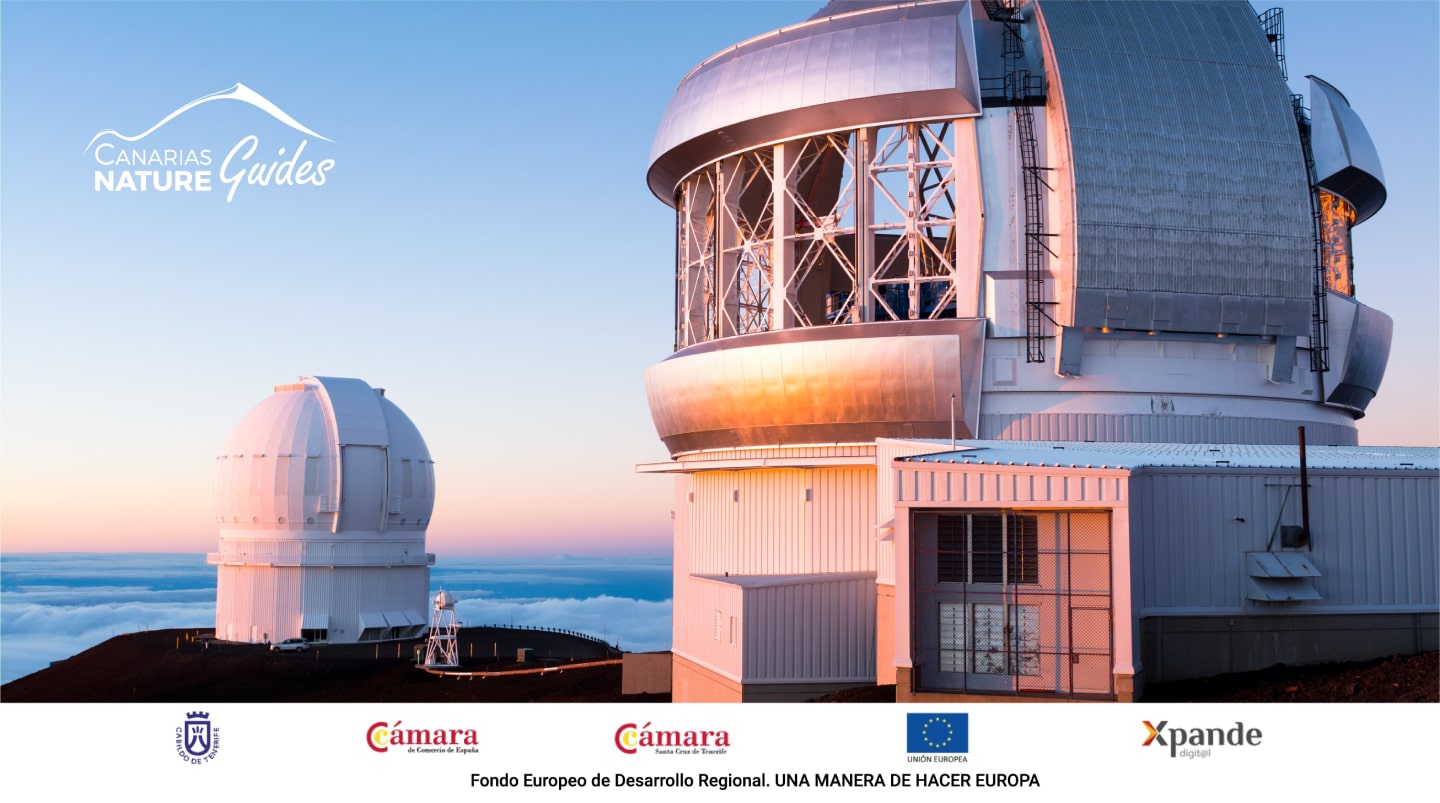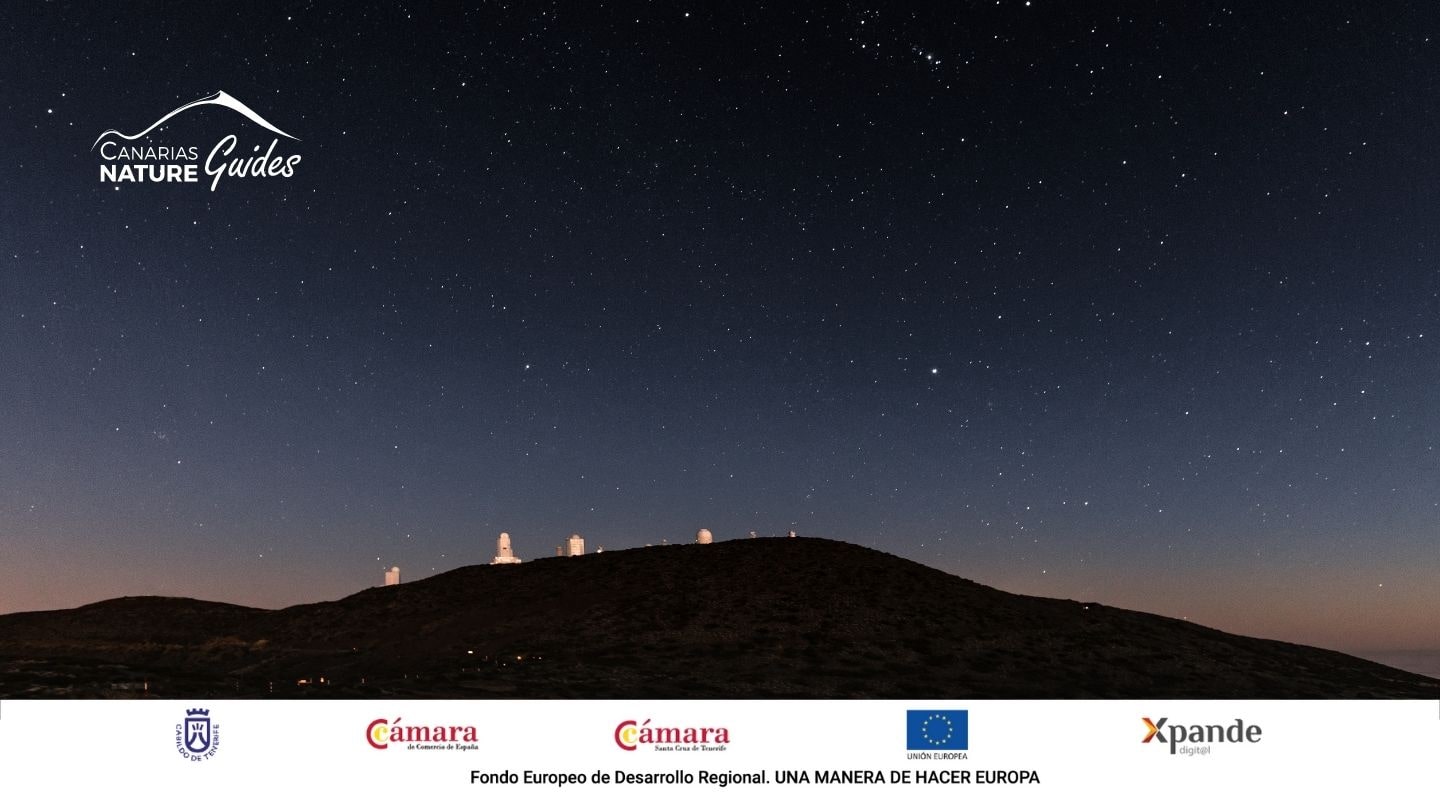Did you know that Tenerife is one of the best destinations for astrotourism in Spain? This island is a priviliged place to observe the night sky. Do you want to know what phenomena you can observe this 2021? Then, do not miss this post!
Since 1988, the Canary Islands have had a Law on the Protection of Astronomical Quality at the Observatories of the main astrophysics institute, called “Instituto de Astrofísica de Canarias” (IAC). This is known as the Canary Islands Sky Law, whose purpose is to ensure the researches in this field of study and protect the quality of the canarian observatories.
This law has encouraged the creation of the Starlight Foundation, a non-profit organization for “the dissemination of astronomy and the coordination, management and promotion of the principles and philosophy of the Starlight movement”, as it is said on their official website. You can also read on this website that one of the main purposes is “to promote scientific tourism and, more specifically, star tourism”. To achieve this, they have developed the certification system “Starlight Tourist Destinations” to give a special consideration to specific places that are protected against the light pollution and have the ideal sky quality and infrastructure to do this activity.
At the present, may 2021, the list of Starlight Tourist Destinations is composed of 36 places places from around the world and, among them, six belong to the Canary Islands and, more specifically, three are located in Tenerife and are the following:
La Matanza de Acentejo
El Teide
Granadilla de Abona
Other key points are the two main observatories in the islands: the first one in Roque de Los Muchachos in La Palma and the second one in Izaña, in Tenerife. These sites have the largest collection of optical and infrared facilities for astrophysics in the European Union.
Teide Observatory, due to its geographical location and the transparency and quality of its sky, is reserved for the study of the sun, using the best European solar telescopes. It was in 1979, right in this observatory, that the heliosesmology was born, a technique with which scientists study the vibrations of our star and get an insight of its interior.
Roque de los Muchachos Observatory has the largest optical and infrared telescope in the world, GRANTECAN, as well as twenty telescopes from various countries and European scientific institutions.

If you want to learn about the mysteries of the universe and observe astronomical phenomena and celestial bodies from the island of Tenerife and enjoy its clear sky, at Canarias Nature Guides we have several options for you.
If you have just started with this alluring hobbie, do not worry, we have activities for begginers and our guides will accompany you no matter if it is an activity realised with binoculars or seen with the naked eye. Conversely, if you have already adquired some knowledge and you want an advanced activity using a telescope, you can count with our observation team and our specialised guides. And last but not least, we also offer you the chance of hiking while the sun sets and then observe the night sky.
Still, you may need to know what you can see, when, how and what will you need, right? Here are some tips and all the information you need to know.
When is the best time to see the stars?
The suitability of the climate of the Canary Islands and the good quality of the sky make stargazing possible almost all year round.
What do I need to observe the stars in Tenerife?
As we have already said, the sky quality and the air of the island will let you observe with the naked eye a great number of celestial bodies. However, if you are looking for a more inmersive experience, you also have the option of using binoculars or a telescope to view the various astronomical events visible from Tenerife.
Are you thinking of doing this activity? Then, it is important that you are well equipped so you will have a completely satisfying experience. The pleasant temperatures of the coast change when you ascend to Teide National Park (being at more tan 2,000 meters above sea level). At night, temperatures drop and you should protect you against the cold with warm clothes from head to toe. A beanie, gloves, warm socks and a closed shoe with a thick sole are recommended, as well as carrying a blanket with which you can stay in the ground and a hot drink.
What celestial bodies can be observed?
Astronomical events 2021
March 9th and March 10th: Alignment of Saturn, Jupiter and Mercury with the Moon
The 9th and the 10th of march, the Moon and this three planets are going to be aligned almost perfectly in the sky, creating a breathtaking phenomenon that we will be able to see without using a telescope. From Earth, this celestial bodies will be seen as bright dots and we will especially note Jupiter.April 21th and April 22th: April Lyrids
It is a meteor shower that will have a duration of 10 days, between the 16th and the 26th of April. However, the probability of observing the phenomenon will be higher the night of the 21th of April and after midnight. Teide will be an excellent place for its sighting thanks to its high and the absence of light pollution. Nevertheless, this date coincides with the full moon. Therefore, the best time to appreciate the meteor shower will be when the moon is hidden and this will happen before dawn.August 2nd: Saturn in opposition
When Earth is between a planet and the Sun and these two celestial bodies are at two diametrically opposite points, a phenomenon called “opposition” occurs. This time, the 2nd of August, Saturn will be in opposition to the Sun with Earth between. By using an appropriate telescope, it will be possible to observe their rings and moons throughout the night.August 11th and August 12th: Perseids
From the 6th to the 10th of October: Draconids
The Perseids are not the only meteor shower that can be seen from the Canary Islands there are others that you can enjoy this 2021, such as the Draconids. This one will be easier to observe the 8th of October 2021 at night and after midnight. The peak of this phenomenon lasts only a few minutes, but it will leave you totally impressed with its beauty. Draconids are best appreciated with the naked eye, so you do not need telescopes to enjoy this unforgettable spectacle.Do you want to see the stars in one of the most transparent and clean skies in the world? Check out our Stargazing in Teide” experience and enchant yourself with the beauty of the night sky after a unique sunset from the top of a volcano. If you are an astronomy lover or just want to know some secrets of the universe in which we live, our guides will teach you everything you need to know. Enjoy a unique experience, book now on our website!.